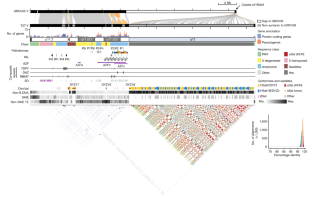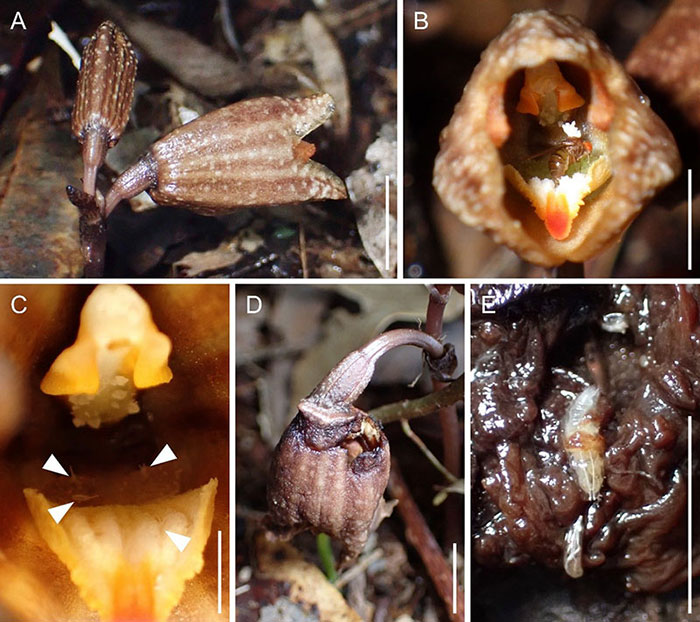2023-08-24 ニューサウスウェールズ大学(UNSW)
◆アカンサモーバは細菌と角膜細胞を養分とし、角膜の炎症と損傷を引き起こします。感染を駆除するのは困難で、アカンサモーバの嚢胞とトロフォゾイトの両方でアカンサモーバを殺すことができる薬物がないためです。
◆この感染は、視力の喪失を引き起こし、約4分の1の患者が視力の25%未満で終わるか、失明します。 AKは非常に希ですが、コンタクトレンズを使用する人にとって特に注意が必要です。環境からのアカンサモーバがコンタクトレンズと目の間に取り込まれ、感染症を引き起こす可能性があります。コンタクトレンズを着用している人々は、水泳前にコンタクトレンズを取り外すことを強くお勧めします。
<関連情報>
- https://newsroom.unsw.edu.au/news/health/microorganism-causes-rare-severe-eye-infections-detected-nsw-coastal-areas-study
- https://www.sciencedirect.com/science/article/pii/S004896972304487X?via%3Dihub
オーストラリア東海岸の4つの沿岸ラグーンにおける海水中のアカントアメーバ属菌の同定と定量化 Identification and quantification of Acanthamoeba spp. within seawater at four coastal lagoons on the east coast of Australia
Binod Rayamajhee, Nathan L.R. Williams, Nachshon Siboni, Kiri Rodgers, Mark Willcox, Fiona L. Henriquez, Justin R. Seymour, Jaimie Potts, Colin Johnson, Peter Scanes, Nicole Carnt
Science of The Total Environment Available online: 2 August 2023
DOI:https://doi.org/10.1016/j.scitotenv.2023.165862

Highlights
•Acanthamoeba is an important corneal pathogen, primarily affecting contact lens (CL) wearers.
•A relatively high incidence of Acanthamoeba observed in coastal lagoons.
•Acanthamoeba incidence was associated with water turbidity, temperature, dissolved O2 and intl1 gene (p < 0.05).
•Cyanobacteria, Pseudomonas spp., Vibrio pacinii and Candidatus spp. were positively correlation with Acanthamoeba in lagoons water.
Abstract
Acanthamoeba is an opportunistic free-living heterotrophic protist that is the most predominant amoeba in diverse ecological habitats. Acanthamoeba causes amoebic keratitis (AK), a painful and potentially blinding corneal infection. Major risk factors for AK have been linked to non-optimal contact lens hygiene practices and Acanthamoeba contamination of domestic and recreational water. This study investigated the incidence and seasonal variation of Acanthamoeba spp. within coastal lagoons located on the eastern coast of Australia and then examined the association between Acanthamoeba and water abiotic factors and bacterial species within the water.
Water samples were collected from four intermittently closed and open lagoons (ICOLLs) (Wamberal, Terrigal, Avoca and Cockrone) every month between August 2019 to July 2020 except March and April. qPCR was used to target the Acanthamoeba 18S rRNA gene, validated by Sanger sequencing. Water abiotic factors were measured in situ using a multiprobe metre and 16S rRNA sequencing (V3-V4) was performed to characterise bacterial community composition. Network analysis was used to gauge putative associations between Acanthamoeba incidence and bacterial amplicon sequence variants (ASVs).
Among 206 water samples analysed, 79 (38.3%) were Acanthamoeba positive and Acanthamoeba level was significantly higher in summer compared with winter, spring, or autumn (p = 0.008). More than 50% (23/45) water samples of Terrigal were positive for Acanthamoeba which is a highly urbanised area with extensive recreational activities while about 32% (16/49) samples were positive from Cockrone that is the least impacted lagoon by urban development. All sequenced strains belonged to the pathogenic genotype T4 clade except two which were of genotype clades T2 and T5. Water turbidity, temperature, intl1 gene concentration, and dissolved O2 were significantly associated with Acanthamoeba incidence (p < 0.05). The ASVs level of cyanobacteria, Pseudomonas spp., Candidatus spp., and marine bacteria of the Actinobacteria phylum and Acanthamoeba 18S rRNA genes were positively correlated (Pearson’s r ≥ 0.14). The presence of Acanthamoeba spp. in all lagoons, except Wamberal, was associated with significant differences in the composition of bacterial communities (beta diversity).
The results of this study suggest that coastal lagoons, particularly those in urbanised regions with extensive water recreational activities, may pose an elevated risk to human health due to the relatively high incidence of pathogenic Acanthamoeba in the summer. These findings underscore the importance of educating the public about the rare yet devastating impact of AK on vision and quality of life, highlighting the need for collaborative efforts between public health officials and educators to promote awareness and preventive measures, especially focusing lagoons residents and travellers.


